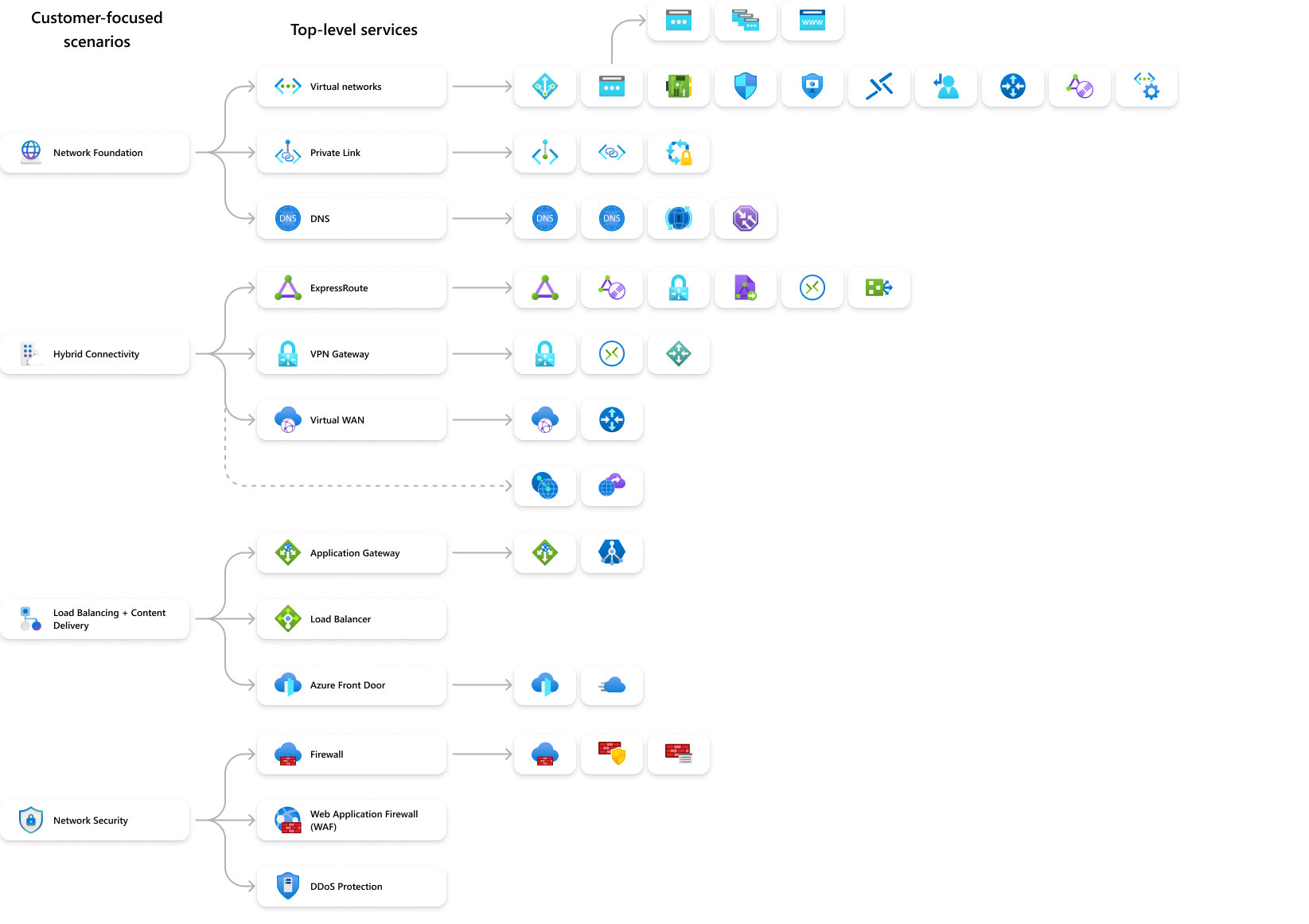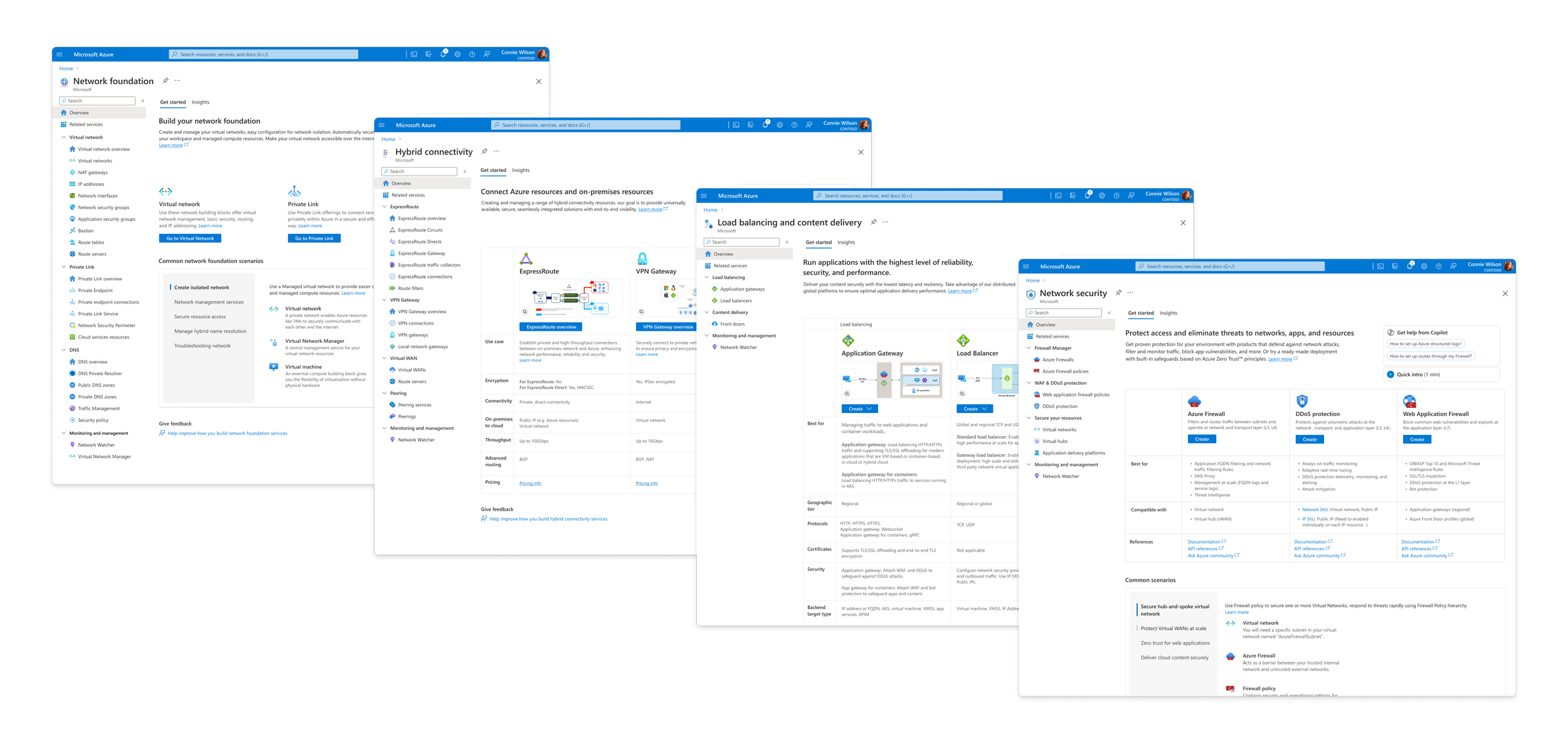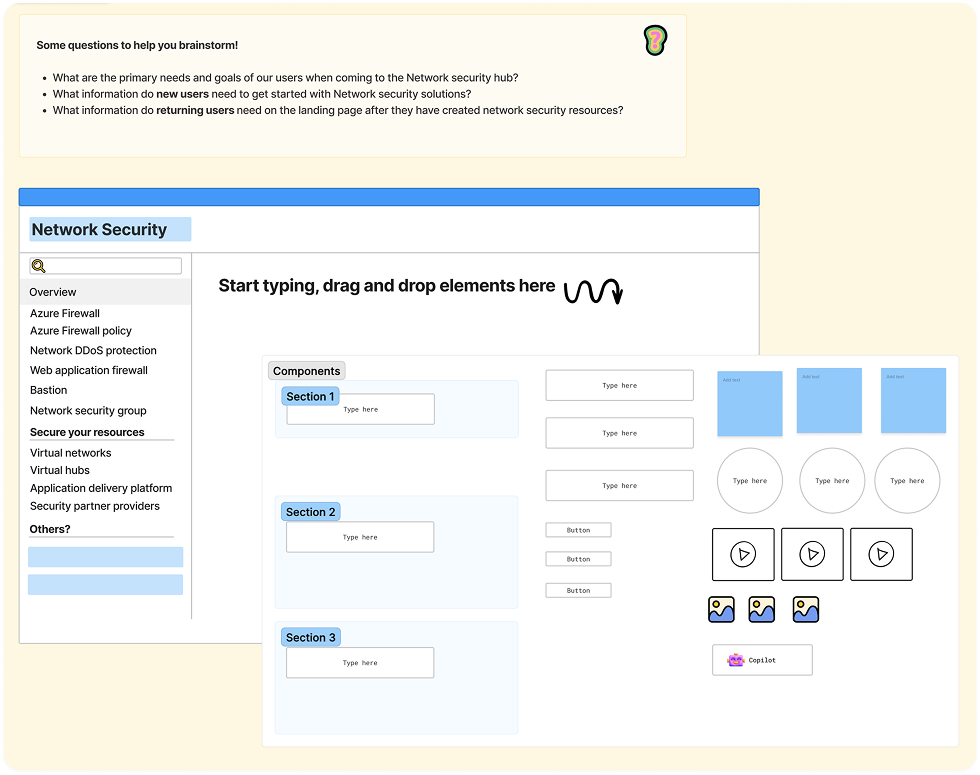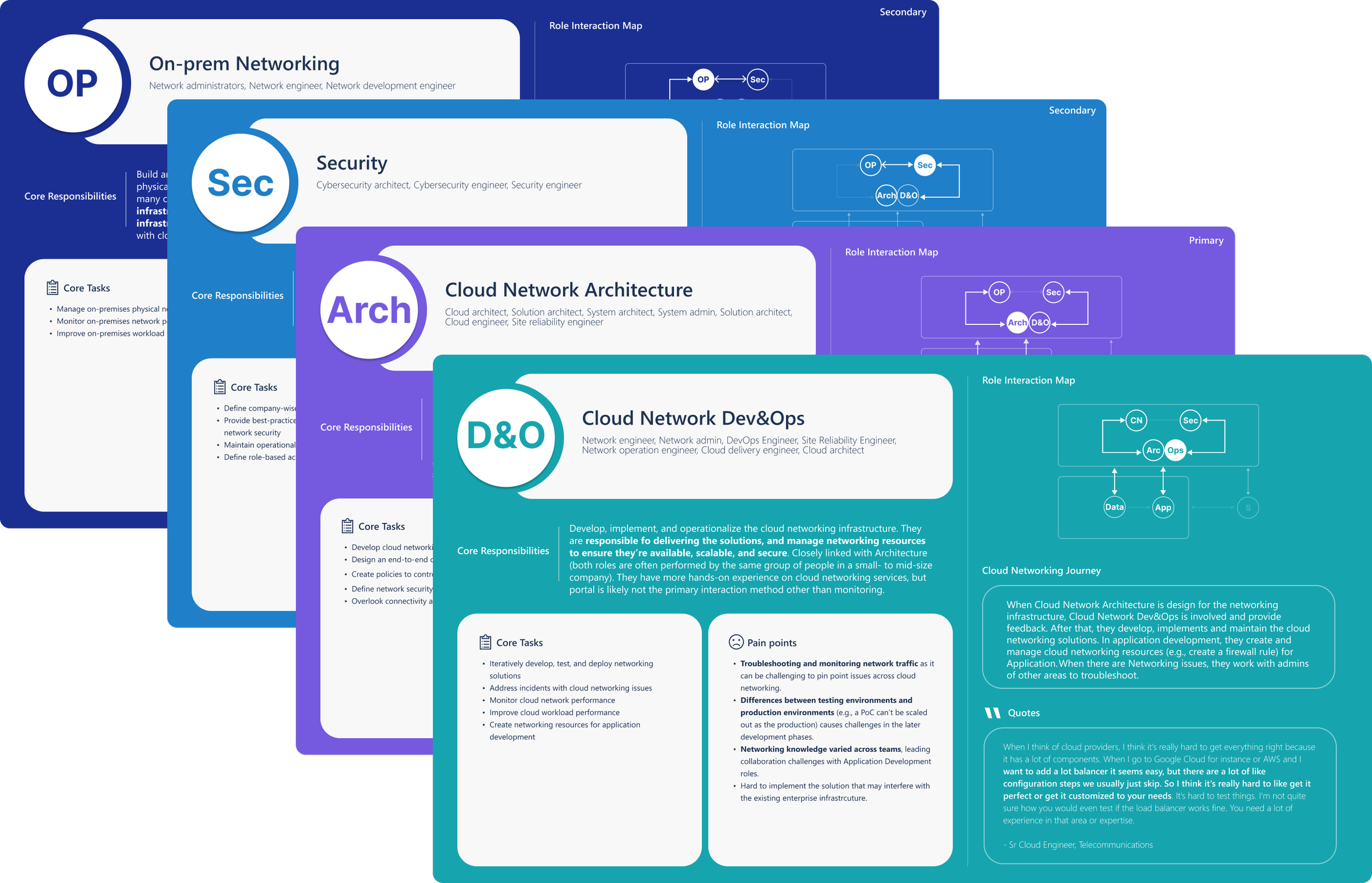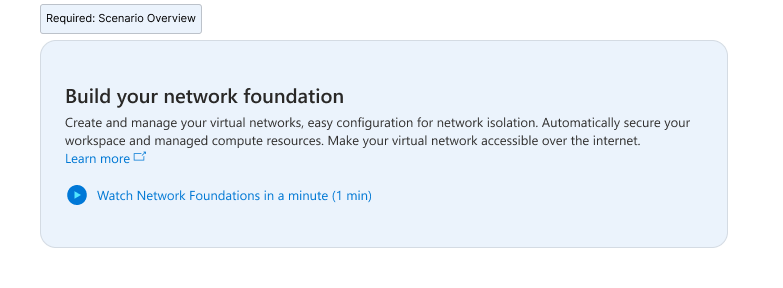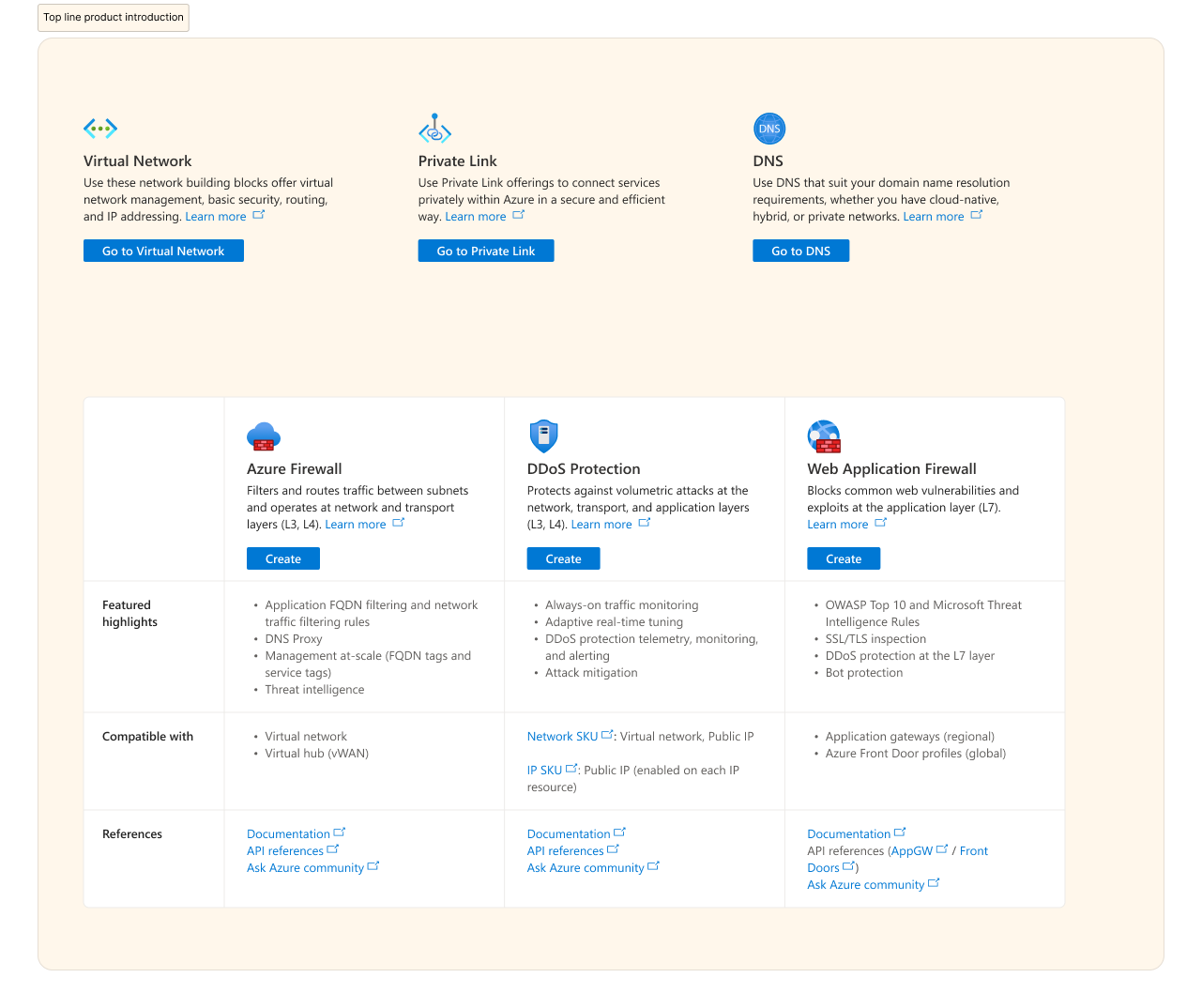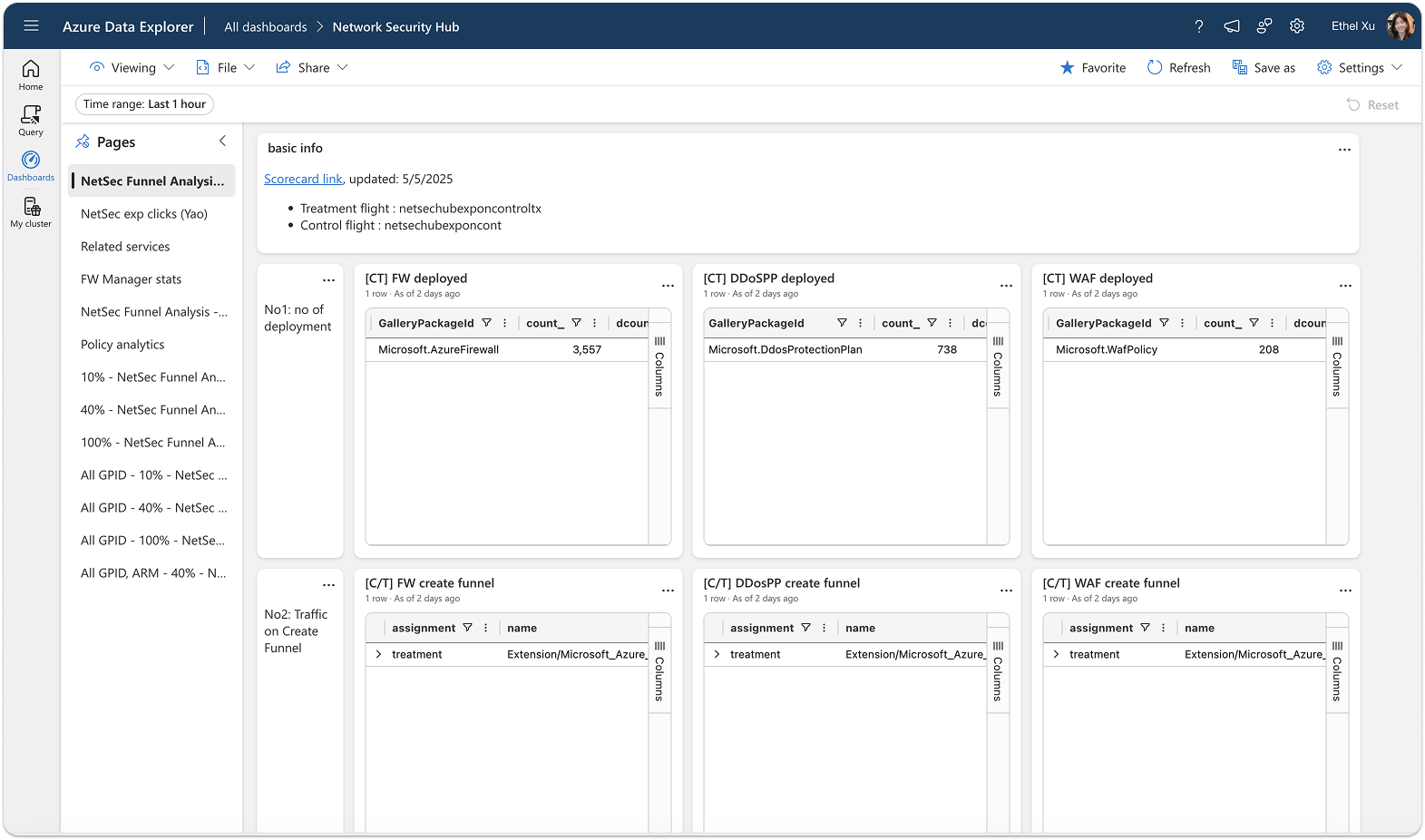Simplifying Experiences Azure Networking portfolio
Conlidating 40+ Networking services into 4 customer-focused scenarios and 12 top-level services.
📈 Increased successful adoption rate by 3X | 📌 Published announcement on Azure Tech Community blog & Network Security blog
My role
Design owner of Azure Network Security, collaborated with 20+ stakeholders—including PMs, Marketing, Docs, Design, Research, and Engineering, and established the first sets of centralized platform patterns in Azure.
Problems to tackle:
As Azure Networking services portfolio growing into a $40B business with 40+ products, covering cloud, edge, and hybrid, it also comes with navigation complexity, discoverability and onboarding difficulty for customers.
Key objective:
Bridge the diverging paths and gaps among Azure website, portal, and documentation and create a more focused, streamlined, and intuitive experience.
We started by categorizing 40+ networking services into 4 customer focused scenarios, each highlights 3 of it’s top of line product offerings
Then unified 3 customer platforms Azue.com, Azure Portal, and Azure documentation site under 1 cohesive information architecture sharing the same terminology:
Network Foundation
Hybrid Connectivity
Load Balancing
Network Security
Together, we built 4 hubs each matching the 4 networking scenario that shares design consistency while sastified each its own unique user needs.
Business impact
A/B experiment results
Increase products discoverability by 3X
Increase adoption and conversion rates by 3.75X
Consistent deployment success rate post experimentation
Scroll down for overall process and highlights
⬇️
Process highlights
Driving end to end design consistency while honoring unique customer scenario differences
Brainstorm with SMEs
Collaborated with research partner to lead Internal stakeholder brainstorming sessions, using Figjam to create real-time sketches based on internal knowledge on customer needs and industry trends.
Results:
Drove alignment on feature priorities among 5+ product owners in NetSec space, which also helped speeding up the design ideations process.
Identify shared goals and unique customer scenario differences leveraging our deep understanding of user core JTBD and pain points
Though all 4 hubs shared the same goals of simplyfing and guiding users through setting up their cloud environment, each networking scenario has its unique offerings and target audience.
Defining shared patterns and establishing usage guidelines
Working with 3 other Networking designers, each owning a scenario, we found common ground and established the landing page structure aiming to help customers get started with each scenario.
Scenario overview: All hubs will have a topline introduction and links to documentation for this specific networking scenario.
Common scenario card: Leveraging visual diagram, helping customers understand the tools they need in ordre to build a specific infrastructure.
Topline offerings introduction:
Each hub has it’s own choice of using a comparison table v. simple introduction to guide users choosing the right service for their use case
Design for replicable success
Create and document the first sets of centralized platform patterns to share across the azure ecosystem.
The “Related services“ core patterns I created initially for Network security was adopted by 6 other hubs.
Data driven design leadership
Oversaw the progressive rollout of the experimentation, collaborated with quantitative researcher, and gathered edongoing feedback and telemetry to measure business impact and areas of improvements.


